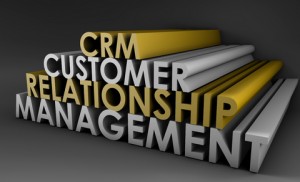Marketing Segmentation and Personalization for Clients
 Is marketing segmentation necessary to a successful advertising campaign? Not necessarily. Success is based on generating ROI – bringing in enough revenue to cover your advertising expenses and overhead while retaining a profit. That’s the bottom line for most advertising campaigns –right?
Is marketing segmentation necessary to a successful advertising campaign? Not necessarily. Success is based on generating ROI – bringing in enough revenue to cover your advertising expenses and overhead while retaining a profit. That’s the bottom line for most advertising campaigns –right?
Well, not necessarily. If you’re running a successful advertising campaign, return is imminent. At the same time, businesses who are successfully marketing should always be taking steps to deepen their marketing funnels and ensure marketing segmentation reaches users in a way that encourages conversion. Many business owners are so wrapped up in their day-to-day business operations that deepening marketing segments is last on their lists.
More Intimate Marketing Segmentation
Establishing trust with your user base or customers is in some cases about deepening intimacy. By deepening intimacy you’re basically approaching users in a way that identifies with their unique needs right away. When customers get marketing from you, they should feel like you’re speaking to their specific needs. The more you can establish that intimacy and create a more personalized experience, the higher your likelihood of conversion. If you’re prepared to work with marketing segmentation, you can find opportunities to create more intimate and personalized marketing materials with less hassle.
Establishing Personalization in Marketing
Marketing segmentation helps you establish personalization by knowing who you’re talking to. In order to understand the different segmented needs of your audience, you’ll need to understand the audience and what needs set them apart. For instance, if you sell a beauty product that’s mostly used by teens and women in their early 20s, you have two separate buying markets: Younger women and the parents of teens.
Knowing this information, you can look back at analytics or at your marketing automation to get an idea of who’s visiting your website and materials based on what channels. You might find that most of the teens find you via Instagram and buying parents open most of your emails. Knowing this, you can craft customized marketing materials for these networks and test those materials over time.
Once you’ve worked with marketing segmentation and sent out personalized messaging, you can continue to work with modifying that messaging over time to bring in higher conversion rates. You can continue sending out comprehensive marketing messaging to your entire client list while you’re doing this, ensuring multiple opportunities for your audience to buy while retaining personalization.
If you need some help decoding your marketing segmentation, give us a call! Lead Liaison’s marketing automation dashboard makes marketing segmentation a snap. Let us tell you more!










